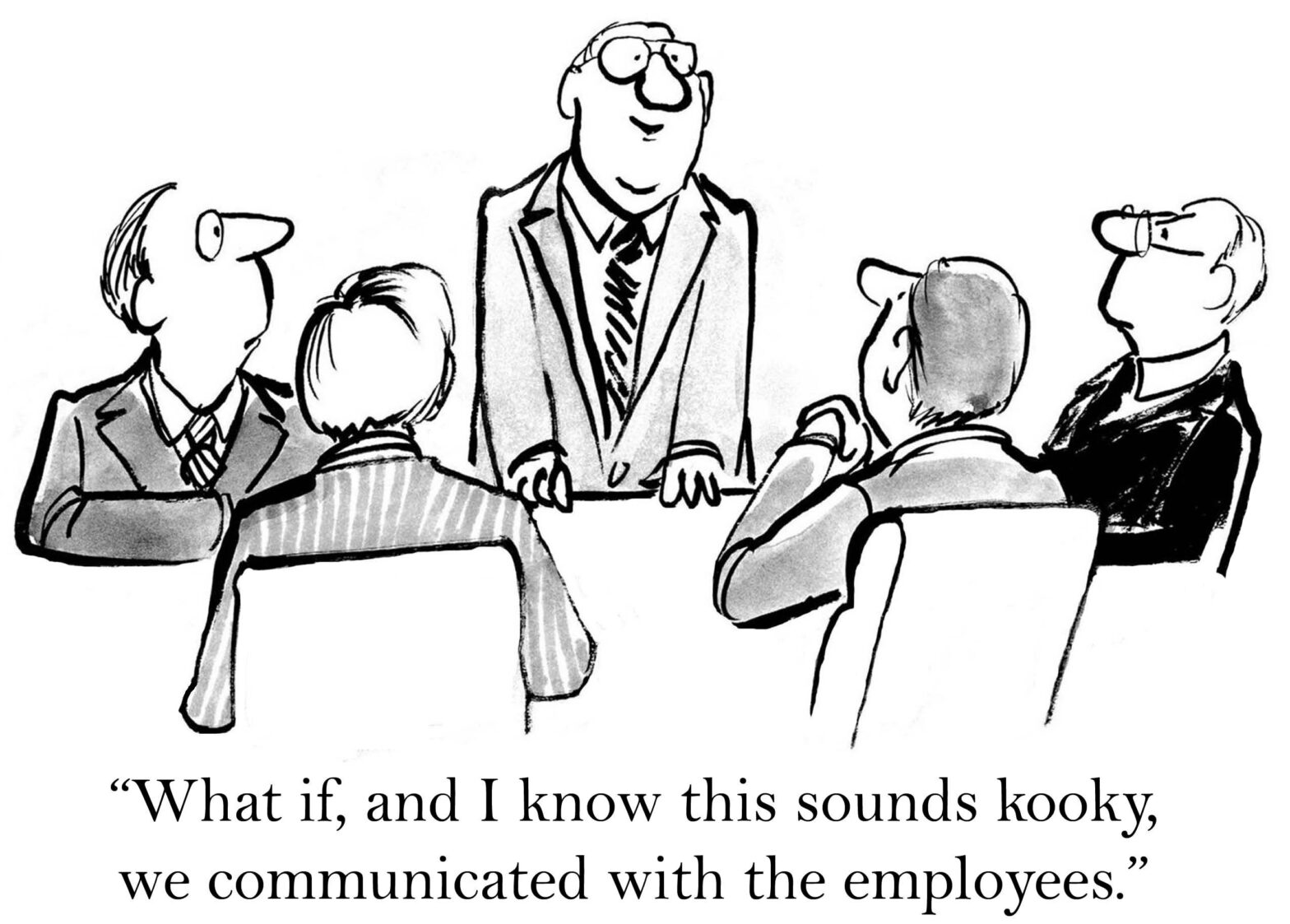All companies need to change in order to grow, but to successfully introduce change, companies need to win over the hearts and minds of their employees.
When companies approach change management, there is tendency for them to focus most of their efforts on their strategic and operational planning. Not enough attention is generally paid to internal communications, telling people why the changes will take place and how they will be affected by them.
Companies can often underestimate how hard it will be to encourage employees to accept and adapt to these changes and good communication needs to be at the heart of any change management plan.
We know that many people fear change and find it stressful and unsettling. The Health and Safety Executive has even identified change as one of the six factors that can lead to work related stress if it is not managed properly.
Businesses planning any kind of change must create a plan focused on communicating and ‘selling’ these changes to their employees to get them on board if they want to implement those changes successfully.
>See also: Cost-effective ways to shield SMEs from cybercrime
Earlier this year a report from the Institute for Employment Studies suggested HR professionals need to think about replacing more established ways of managing change with “evolving fluid approaches”. It’s clear that new approaches are needed to ensure companies can better embrace change.
Here are few practical tips for successfully managing employees through a period of change:
Explain why change is needed
Assume at the outset that employees won’t understand the reasons for change so explain, explain and explain again. Some people’s imaginations may have become limited by the narrowness of their day-to-day experiences but they are capable of understanding the reasons for change. People are far smarter than you think, assume this and don’t patronise them or ignore them.
Open questioning discussions will help employees rediscover what they know but have not necessarily connected with in the reality of their working environment.
Provide proof that change is possible
Give employees examples of where change has been positive and effective. Use case studies from within the business or other businesses. Stories about how challenges were met and what benefits were generated will resonate with them and help them believe they can also benefit. This approach is particularly powerful if people are ‘walked through’ previous case studies as if they were taking part in the process.
Get everyone involved in the process
Get everyone involved in the change management plans so they buy into the plans. There is no substitute for hands-on experience and active participation to engage people, and this approach will enable workers to practice new activities without feeling under pressure or getting caught up in the baggage of a real situation.
Set up some ‘easy win’ lead-ins to help get the process started and enable staff to see that open thinking and open team-working can and does create some remarkable effects and outcomes.
Appoint change champions
Create small, cross-functional teams of change champions to enable people to see that everyone else is participating in change. This will eliminate the excuse that ‘we would change if those people did’.
Keep employees informed
Too often a change programme is launched then the communication about its progress diminishes to such a level that people wonder if it is still happening.
>Related: Working smart – five ways to keep your staff loyal
A framework to keep the mission tight and focused is essential. This shouldn’t be a problem if the activity is outcome-based and change champions are actively communicating within their teams and to other teams. Board level acknowledgment and support in a very open manner is also vital.
Stop doing things the old way
Assuming that the above steps have worked, there will be new things that inevitably need doing, but also activities that will have to be stopped. Allowing the old way of doing things to continue will destroy the change from within.
Failing to stop the old way of doing things is, in fact, one of the biggest reasons why change initiatives do not succeed. People may believe that the old ways worked and lack confidence that change will be a good thing – no matter how rational it is.
All levels of leadership must be aware of this dynamic and actively push through behavioural change in order to ensure that it becomes embedded into organisational culture.
Recognise achievements
Change can be hard work, so celebrate and recognise team and individual achievements throughout the process.
It is possible to change the direction of a company successfully whilst retaining its employees, just ensure that they are involved and kept informed along the way right until the end of the journey.






